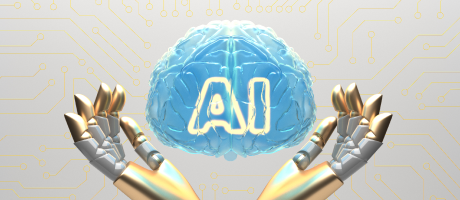Blog Posts & Blog Archives
All Blogs / it-and-computer
The Evolution of Wireless Networks, Their Challenges, and Their Promising Technologies
Explore the evolution of wireless networks from 1G to 5G, the challenges faced, and promising future technologies like 6G, quantum communication.
Friday, May 24, 2024
The Evolution of Wireless Networks, Their Challenges, and Their Promising Technologies
One of the 21st century's most revolutionary technical developments has been the emergence of wireless networks. The way we communicate, access information, and engage with the outside world has changed dramatically with each technological advancement, from first-generation analog systems to today's fast 5G networks. Understanding the course of this evolution, the difficulties we confront, and the exciting innovations that lie ahead is crucial as we prepare to enter a new age in wireless technology. The Evolution of Wireless Networks 1G to 4G: A Brief Overview 1G: The first generation of wireless networks introduced analog voice communication. It was revolutionary for its time, enabling mobile telephony, but it had significant limitations in terms of capacity, security, and voice quality. 2G: Marked the shift from analog to digital, improving call quality and enabling text messaging (SMS). This generation also introduced the Global System for Mobile Communications (GSM), which became the standard for mobile communication worldwide. 3G: Brought about higher data transmission rates, making mobile internet access feasible. This generation supported multimedia messaging, video calls, and mobile internet, laying the foundation for the smartphone revolution. 4G: Significantly increased data transfer speeds, allowing for high-definition video streaming, online gaming, and improved voice-over-IP services. The introduction of Long-Term Evolution (LTE) technology was a game-changer, providing a seamless mobile internet experience. The Leap to 5G 5G represents a monumental leap in wireless technology. Unlike its predecessors, 5G isn't just about faster speeds—though it does offer significantly higher data rates. It introduces several new capabilities: Enhanced Mobile Broadband (eMBB): Delivers ultra-fast internet speeds, supporting high-definition streaming, virtual reality (VR), and augmented reality (AR) applications. Ultra-Reliable Low Latency Communications (URLLC): Enables real-time applications like autonomous driving, remote surgery, and industrial automation, where latency is critical. Massive Machine Type Communications (mMTC): Supports the Internet of Things (IoT) by connecting billions of devices, from smart home gadgets to industrial sensors. Challenges in the 5G Era Despite its promising capabilities, 5G faces several challenges: Infrastructure Development: 5G requires a dense network of small cells, particularly in urban areas, to provide the necessary coverage and capacity. Building this infrastructure is costly and time-consuming, involving significant investment from telecom operators. Spectrum Availability: 5G operates across multiple frequency bands, including low, mid, and high (millimeter-wave) spectrums. Each band has its advantages and challenges, and efficient spectrum allocation and management are critical for optimal 5G performance. Security Concerns: With increased connectivity comes increased vulnerability. The proliferation of IoT devices and the critical applications supported by 5G make it essential to address security concerns comprehensively. Ensuring data privacy and protecting networks from cyber-attacks are paramount. Compatibility and Transition: Transitioning from 4G to 5G involves compatibility issues with existing devices and networks. Ensuring a smooth transition while maintaining service continuity presents a significant challenge. Promising Technologies Beyond 5G: As we look beyond 5G, several emerging technologies promise to further revolutionize wireless communication: 6G Networks: 6G is expected to build on the foundations of 5G, offering even higher speeds, lower latency, and more advanced applications. Potential features of 6G include: 1.Terahertz Frequencies: Utilising higher frequency bands to achieve unprecedented data rates. 2.AI Integration: Leveraging artificial intelligence for network optimization, predictive maintenance, and dynamic resource allocation. 3.Improved Connectivity: Supporting advanced applications like holographic communication, tactile internet, and immersive extended reality (XR) experiences. 4.Quantum Communication: Quantum communication promises ultra-secure data transmission using quantum cryptography. This technology could revolutionise cybersecurity, providing unbreakable encryption and secure communication channels. 5.Edge Computing: Edge computing brings data processing closer to the source of data generation, reducing latency and improving real-time data analysis. This technology is crucial for applications like autonomous vehicles, smart cities, and industrial automation. 6.Satellite Internet: Satellite internet, particularly with the advent of low Earth orbit (LEO) satellite constellations, promises to provide global internet coverage, bridging the digital divide and bringing connectivity to remote and underserved regions. Conclusion: The evolution of wireless networks from 1G to 5G has transformed our world, enabling unprecedented connectivity and fostering innovation across various industries. As we look to the future, the challenges of infrastructure, spectrum management, security, and compatibility must be addressed to fully realize the potential of 5G and beyond. Emerging technologies like 6G, quantum communication, edge computing, and satellite internet hold immense promise for further revolutionizing wireless communication. By harnessing these innovations, we can build a more connected, efficient, and secure digital world. The journey of wireless network evolution is far from over. As we continue to push the boundaries of what's possible, the future of wireless communication looks incredibly bright, promising to bring even more transformative changes to our lives and society.
Related Blogs
The Evolution of Artificial Intelligence from Its Early Days to the Present
Explore the journey of Artificial Intelligence, from myths to cutting-edge technology, highlighting key pioneers, breakthroughs, and ethical considerations.
By WelinkJobs | Monday, April 15, 2024
Virtual Reality The Technology and Its Future
Explore the current state, applications, and future potential of Virtual Reality technology, from gaming to healthcare and beyond.
By WelinkJobs | Sunday, June 30, 2024



